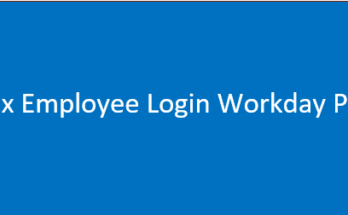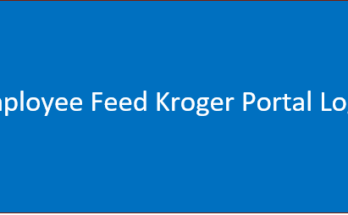According to Guardian. ng website = A Ten-year-old Halima Aliyu from Sokoto State, Nigeria, has experienced the challenges of being a street hawker and the importance of education. She believes that with the intervention of a non-governmental organization, the Mothers’ Association, she would have continued her life as a hawker while her peers were in school. According to data from the United Nations Children’s Fund (UNICEF), Nigeria is a “country of the young,” with about 46% of the 200 million population currently under the age of 15. The current total for children under the age of five stands at nearly 31 million, and each year, at least seven million babies are born.
Nigeria accounts for more than one in five out-of-school children anywhere in the world. Although primary education is officially free and compulsory, only 67% of eligible children take up a place in primary school. If a child misses school for even a short time, there is only a low chance, about 25%, that the child will ever return. Girls suffer more than boys in terms of missing out on education. In the Northeast, for instance, only 41% of eligible girls receive primary education, and 47% in the Northwest. In north-eastern and north-western states, 29 and 35% of Muslim children, respectively, attend Qur’anic school, which does not include basic education skills such as literacy and numeracy.
A national survey found that the country has the largest number of child brides in Africa, and 23 million girls and women were married as children. Statistics showed that about 129 million girls are out of school globally and one in every five of the world’s out-of-school children is in Nigeria. UNICEF Education Manager, Miriam Mareso, at a media dialogue on girls’ education in Sokoto, noted that common gender norms have continued to put girls at a disadvantage, leading them to drop out of school at higher rates, pushing parents to prioritise boy-child education and engage in harmful practices, such as child marriage.
UNICEF has been implementing a multi-year girls’ education project (GEP3) since 2012 to change the narrative. The project, funded by the Foreign Commonwealth and Development Office (FCDO), is aimed at getting one million additional girls into primary and Qur’anic schools in six implementing states by 2020 when it was to end. At the end of the project in April 2020, it secured a no-cost extension up to July 2021 and another bridge extension from July 2021 to September 2022.
The Enrolment Drive Campaign (EDC), Girls for Girls (G4G), High-Level Women Advocates (HILWA), and other initiatives under the bridge extension are among the interventions introduced to increase access to girls’ education. It also prioritised strengthening governance to improve girls’ education and capacity building for teachers to deliver effective learning.
Halima is a product of the Enrolment Drive Campaign conducted annually by School-Based Management Committees (SBMCs), Centre-Based Management Committees (CBMCs), and Mothers’ Associations, with support from state and local government areas. Ainan and Halima are beneficiaries of GEP3, which was aimed at opening up social and economic opportunities for girls in northern Nigeria through increased enrolment in basic education, learning, and completion.
Malama Shagari, one of the 6,000 teachers trained under the GEP3 intervention, said the capacity-building training on numeracy taught her what to do to ease learning for pupils. The capacity-building initiative included training facilitators of Integrated Quranic School (IQS), an initiative that integrates traditional Islamic learning, with formal education. So far, about 880 teachers have been trained in Sokoto.
Education is the light of life; one cannot compare an educated person with one who is not. Education is the light of life; it gives one the strength to achieve anything in life.
The Nigerian government has implemented the GEP3 program to help girls in northern Nigeria complete basic education and gain life skills. Key results show that about 1.3 million girls have been enrolled in primary and IQS schools since 2012, exceeding its one million target. UNICEF Chief Field Officer, Sokoto, Dr Marym Darwesh, reported that 44% of girls have been enrolled in GEP-supported schools since 2012, resulting in over 400,000 girls. However, as the UK-funded phase three GEP Bridge extension ends by September 2022, some girls remain out of school.
The state government has developed a sustainability plan, including an enrollment drive campaign and scaling G4G to cover primary and junior secondary school levels to increase girls’ attendance, retention, completion, and transition rates.
However, timely funding, political will, and a shortage of qualified teachers and facilitators pose major challenges to the effectiveness of the interventions. Women Advocates Research and Documentation Centre Executive Director, Dr. Abiola Akiyode-Afolabi, criticized the government for not doing enough to address issues concerning the girl child and the need to get more girls into school.
The Nigerian government has implemented the GEP3 program to help girls in northern Nigeria complete basic education and gain life skills. Since 2012, 1.3 million girls have been enrolled in primary and IQS schools, exceeding the one million target. UNICEF reported that 44% of girls have been enrolled in GEP-supported schools, resulting in over 400,000 girls.
However, as the UK-funded phase three GEP Bridge extension ends by September 2022, some girls remain out of school. The state government has developed a sustainability plan, including an enrollment drive campaign and scaling G4G to cover primary and junior secondary school levels, but challenges such as timely funding, political will, and a shortage of qualified teachers and facilitators pose major challenges.



